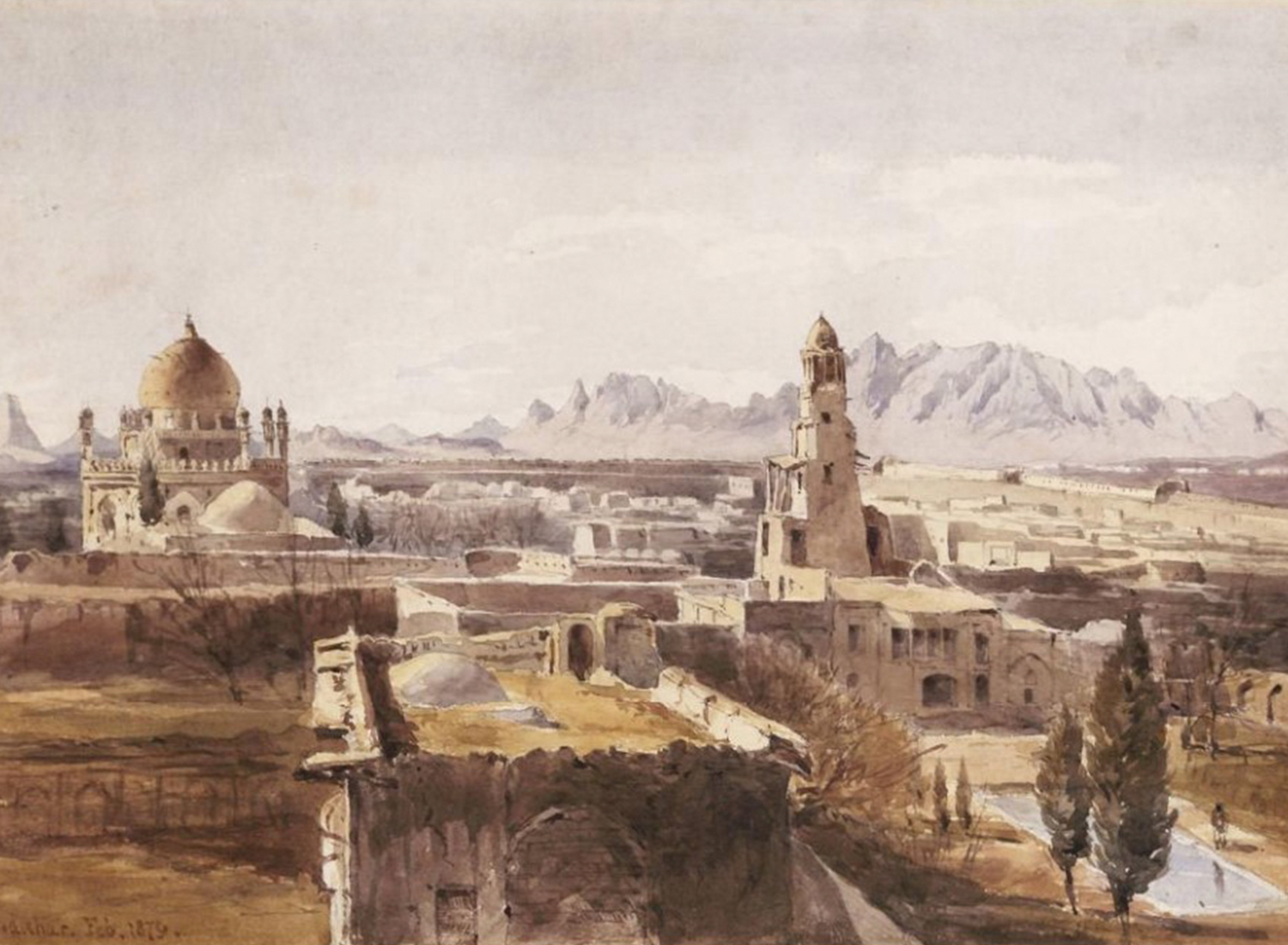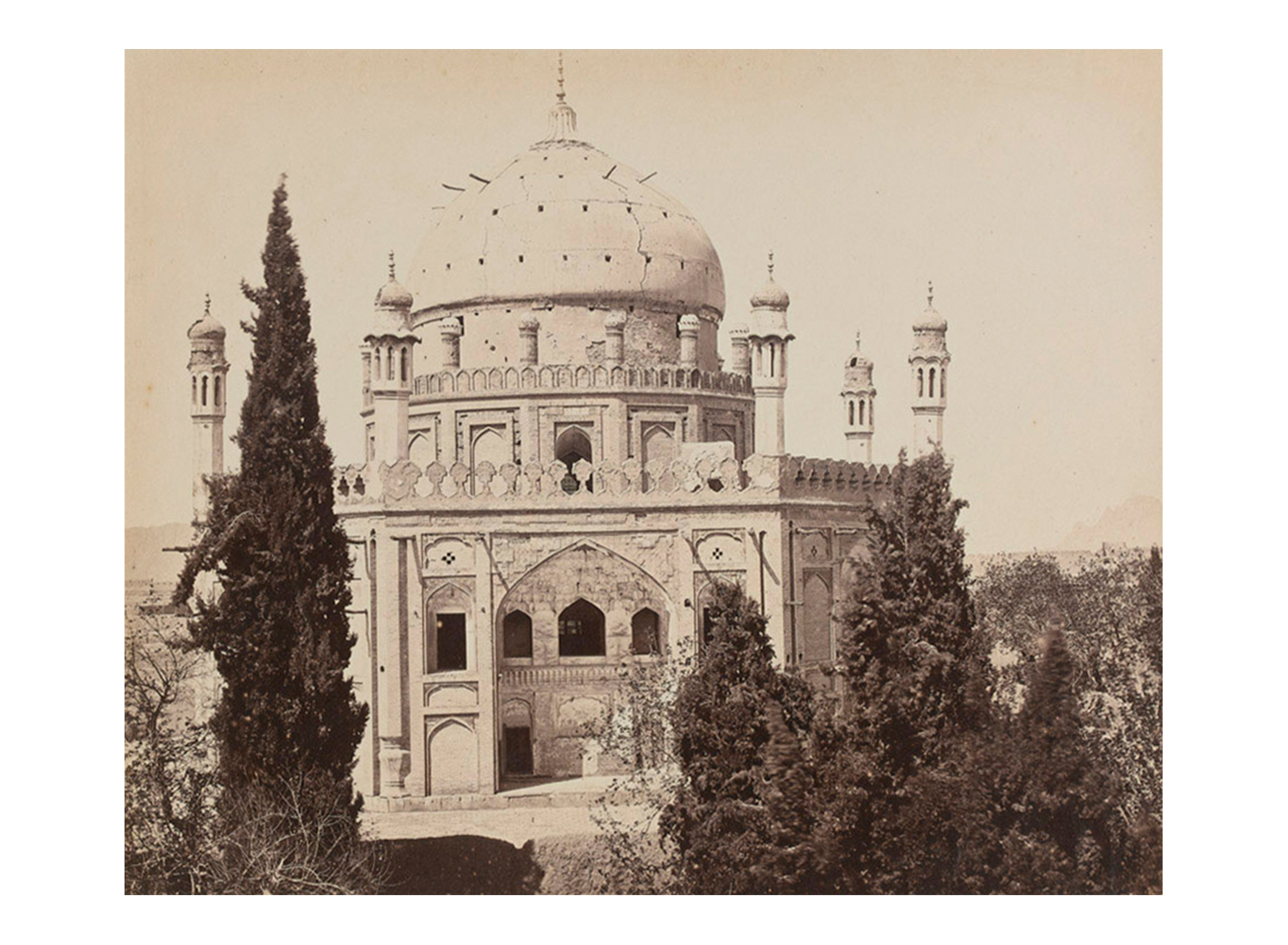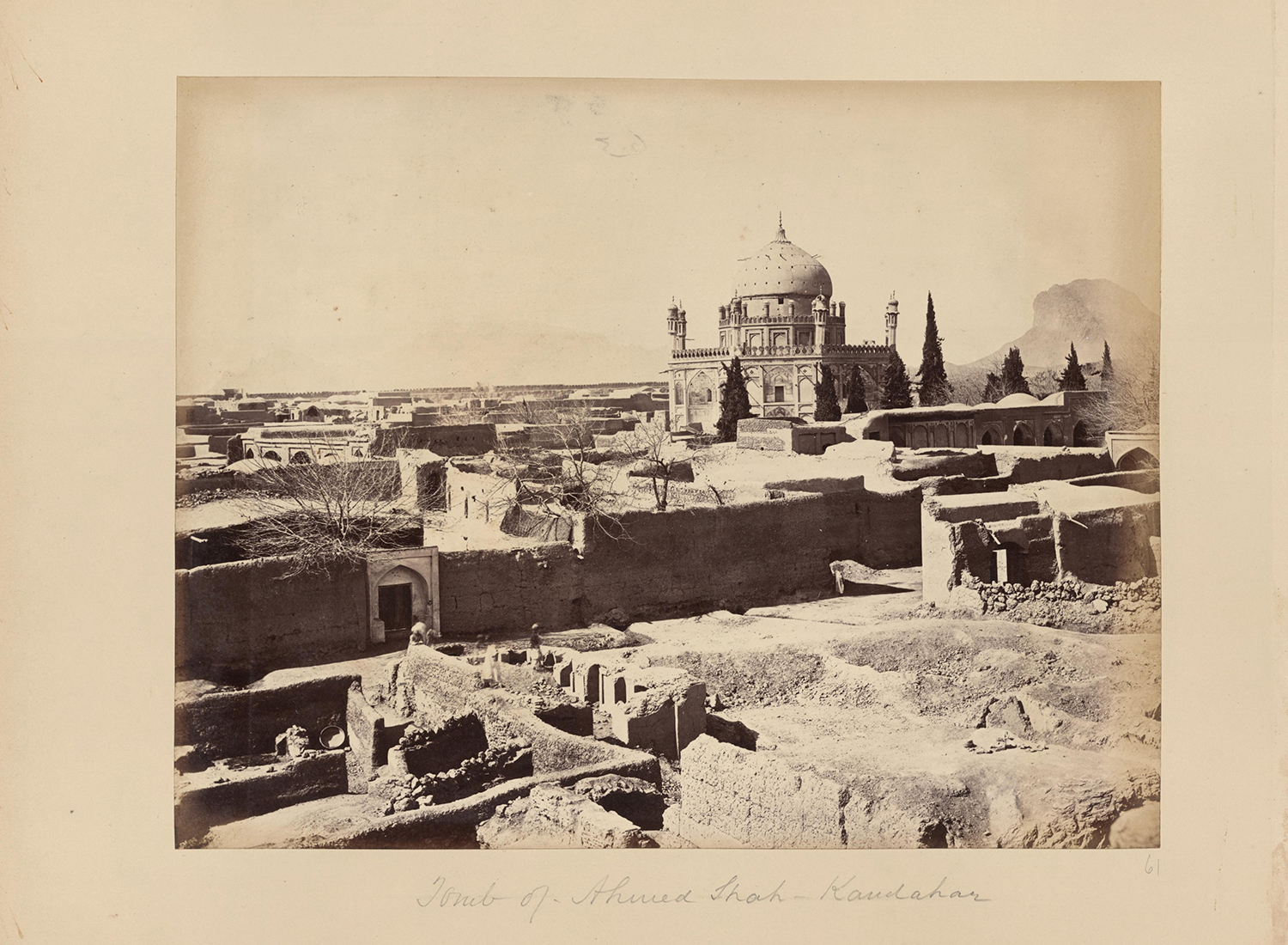ARTICLE
Tomb of Ahmad Shah Durrani, Kandahar
Built in the late eighteenth century in Kandahar, Afghanistan, the mausoleum of Ahmad Shah Durrani (originally Abdali) (r. 1747–72) is a brick-and-tile monument housing his tomb as well as those of his children. The Afghan ruler was the founder of the Durrani empire and, by most accounts, of the modern-day state of Afghanistan; his mausoleum is part of a complex that holds the Kherqa Sharif, one of the holiest Islamic shrines in Afghanistan — making it highly significant in the region’s political, cultural and religious history. The construction of the tomb and the shrine were probably overseen by Ahmad Shah’s son and successor, Timur Shah Durrani (r. 1772–93), on a site founded by Ahmad Shah himself. It is also known as Ahmad Shah Baba’s tomb, after the ruler’s popular epithet meaning ‘father’.
A member of the Sadozai clan, Ahmad Shah was a hereditary leader of the Abdali tribe, thus representing two major ethnic groups in the Afghanistan region. He commanded Abdali troops in the army of the Persian ruler Nadir Shah between 1736–47. Following Nadir Shah’s assassination in 1747, Ahmad Shah took over sovereign leadership with the support of other Afghan clan chiefs, also taking the royal insignia and the coveted Koh-i-Noor diamond from his predecessor. Having christened himself Shah Durr-i-Durran — ‘King, Pearl of Pearls’ — he went on to establish a kingdom that encompassed present-day Afghanistan and parts of modern-day Iran, Pakistan, Turkmenistan and India, with its capital at Kandahar. After a long illness he died in Maruf in Kandahar province, and was buried at the mausoleum whose construction had already been under way for some time. The tomb complex stands in the centre of the present-day city of Kandahar. It also includes a mosque, a cemetery and a historical khanqah (Sufi resthouse) that is now used as a madrassa, besides the Kherqa Sharif shrine.
The tomb, made of fired brick with a lime plaster, rises from a platform of basaltic rock, and comprises an octagonal lower section and a much smaller second tier topped with a large, blue-tiled dome. It is a sizable structure covering an area of about 59 square metres and reaching a height of about 24 metres. The largely beige exterior has ogival, or pointed-arched, niches of varying heights and depths. Glazed ceramic tiles, particularly in blue-green, adorn parts of the niches, while the soffits, or undersides, of several arches are adorned with muqarnas or honeycomb vaulting, bearing floral patterns in gold and lapis paint.
The lower section is crowned by a white parapet of decorative merlons running entirely around, with minarets rising from each of the eight corners. This encloses a smaller polygonal tier, which is topped by a solid parapet decorated with arches and punctuated by smaller minarets in blue and white. Over this rests a cylindrical drum holding the roughly 9-metre-diameter central dome, covered entirely in blue-green tiling. The dome, as well as the cupolas of the minarets, are topped with slender finials.
Wooden doors allow entry into the tomb chamber, the inside of which is lavishly decorated. A roughly 1-metre-high dado, or lower panelling, runs along the base of the walls, covered in patterned blue-green tiles that are made locally. The rest of the structure, including the walls, niches, and ceiling, are densely patterned with floral designs in deep, warm colours such as browns, reds and gold. The walls feature carved arches in low relief as well as deeply inset arched niches with muqarnas decoration. The cornices of the eight corner niches bear Arabic inscriptions written in the Nastaliq style of calligraphy, extolling Ahmad Shah and his reign while also recording the year of his death. Above, the inside of the dome is heavily decorated with gold paint, and a gilded globe hangs from the ceiling. Arched wood-frame windows placed in two tiers high on the walls allow for the chamber to be flooded with natural light during the day.
The ruler’s cenotaph is located a little offset from the centre of the chamber. Kept covered with embroidered cloth, it is made from a marble-like white limestone, which is historically quarried from Maiwand near Kandahar and has been popular in Afghan monuments since ancient times. In addition to the cenotaph, the chamber houses the helmet, gauntlet and sceptre of Ahmad Shah, displayed in a glass case. A subterranean chamber below the structure houses the graves of the ruler and his family, where visitors can offer prayers.
The history of Ahmad Shah’s tomb is interlinked with that of the Kherqa Sharif shrine. The cloak relic was brought to Kandahar in 1769, during Ahmad Shah’s reign, and may have briefly been housed in either a temporary structure or within a nearby mosque. Scholars suggest that Ahmad Shah or his successor Timur Shah intended for the cloak to be housed within the tomb, given the relic’s association with rightful political authority. The off-centre position of Ahmad Shah’s cenotaph within his tomb further suggests that the cloak was originally intended to be enshrined centrally under the dome. However, following the opposition of religious scholars against using the cloak as a political tool, a dedicated shrine was built for the relic in 1776, and an Islamic legal ruling or fatwa was later issued preventing it from being moved. Nineteenth-century chronicles of British military officials stationed in the country following the first Anglo-Afghan War (1839–42) state that Ahmad Shah’s tomb and the Kherqa Sharif shrine were locally believed to be asylums, offering not only a space to retreat from society but also a sanctuary from the law as the site’s holiness rendered it outside of any legal jurisdiction.
The mausoleum was restored extensively between 1960 and 1967. It was also reportedly one of the historical structures in the Kandahar province to receive funding towards renovation from Western agencies in the early 2000s, along with Kherqa Sharif and the Shah Maqsud shrine, Khakriz. This formed part of a larger reconstruction project in the country in the wake of the invasion by the USA and subsequent war triggered by the Al-Qaeda terrorist attack of September 11, 2001. The tomb remains a cultural landmark, and is frequented by visitors paying their respects to Ahmad Shah.
Bibliography
Britannica, The Editors of Encyclopaedia. “Aḥmad Shah Durrānī.” Encyclopedia Britannica, November 19, 2021. Accessed April 16, 2024. https://www.britannica.com/biography/Ahmad-Shah-Durrani
Dupree, Nancy Hatch. An Historical Guide to Afghanistan. Kabul: Afghan Air Authority, 1977.
Lally, Jagjeet. “Beyond ‘Tribal Breakout’: Afghans in the History of Empire, ca. 1747–1818.” Journal of World History 29, no. 3 (September 2018): 369–98. https://www.jstor.org/stable/26607627
McChesney, R. D. Four Central Asian Shrines: A Socio-Political History of Architecture. Leiden: Brill, 2021.
Trousdale, William B., Mitchell Allen, and Cyndi Maurer. Kandahar in the Nineteenth Century. Leiden: Brill, 2021.










